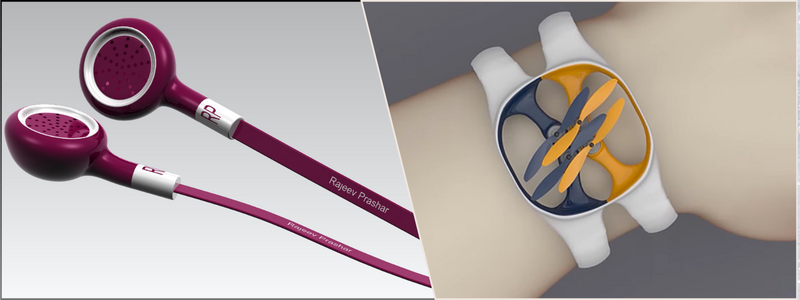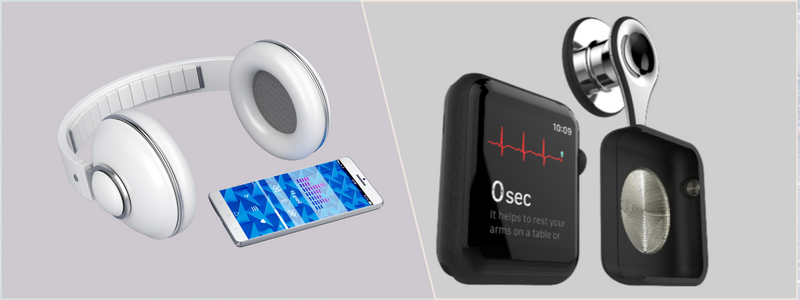Thanks to wearable technology, consumers now enjoy a different way of monitoring, sharing, and communicating experiences and pertinent information. From fitness trackers to smartwatches to VR watches, smart glasses, bright jewelry, and so much more, wearable technology is set to take the world by storm. More and more brands strive to make their devices more relevant by focusing on fewer features and niches that work well.
The increased technology use by the world’s population and the increased adoption of IoT are expected to further drive the growth of wearable technology based on market analysis throughout the forecast period. The past few years have seen growth in the market because of enhanced technological literacy. This is also expected to continue in the next few years as well. The increased awareness of consumers will result in quick market expansion. And as the purchasing power is boosted, more people will feel more inclined to invest in wearable technology.
Innovative solutions and products have been developed in the industry through constant development and research, further contributing to its growth. For the following years, the market is expected to continue to grow because of the advanced features these wearable devices can offer and the future of wearable design firms are looking brighter than ever.
RELATED: How 3D modeling services are changing the fashion industry
Wearable technology statistics
Here are some interesting statistics about wearable technology:
- Wrist-worn products held a market share of 49.2% in 2021.
- North America had a 38.6% market share in 2021.
- The segment of consumer electronics applications contributed a revenue share of 48.6% in 2021.
- A 10.7% CAGR is forecast for wellness and fitness wearables from 2022 to 2030.
- A higher 14.3% CAGR is expected for the segment of headwear and eyewear products between 2022 and 2030.
- The growth of the global wearable technology market is predicted at 13.89% throughout the 2022 to 2030 forecast period.
Industrial wearable devices and how they add business value
Industrial wearable devices are developed to optimize processes, improve the safety of workers, boost productivity, and streamline operations by offering real-time data. Through wearable technology, businesses can save costs and increase efficiency. Hands-free technology can also empower workers and allow for better team collaboration and communication. Training and onboarding processes have also been accelerated while compressing the communication loops. Here are the most common applications of industrial wearable devices:
RELATED: What is the best clothing design software for 3D rendering & modeling apparel?
Improved plant efficiency
It’s possible to redesign and optimize processes to improve plant efficiency by tracking the movements of employees.
Increased safety
Industrial wearable devices can also help ensure that rotation occurs as planned, lowering the risk of injury due to excessive work or fatigue.
Training reinvented
Wearable technology can also be used as a training aid when training and onboarding new employees.
Use of remote experts
The development of wearable apps can affect industrial processes by allowing remote experts to guide and advise on-site personnel. The remote facilities can take advantage of niche expertise in minutes rather than days due to cross-border travel.
RELATED: Clothing 3D rendering cost, 3D modeling rates & design prices

Industrial wearable device technology for data transmission
A low-range RF signal transmits data through most wearable monitoring devices. These wearable devices regularly stream unprocessed and processed data. They are also expected to do their job indefinitely whether there is an available internet connection. Wearable app development results in technological challenges for businesses regarding offline processing and data volume.
Improved Metaverse experiences with wearable technology
Wearable technology will further enrich the world of Metaverse design artists and designers, which will allow several devices to communicate with one another. The users can also taste the virtual world through an entirely new lens by combining VR and AR technology with 3D movement and spatial sound. Wearable technology will benefit Metaverse experiences ranging from education to entertainment. It means that greater engagement will result from greater immersion.
Watches, in particular, have so much potential as a device in the Metaverse because they can combine with headsets and other devices to offer innovative and new experiences. The extent of the functionality can go way beyond the current trend of smartwatches, from projecting video calls directly from your wrist to producing 3D maps.
RELATED: How to make a prototype for shoes, runners & sneakers with a design services company
Latest trends in wearable app development
With continuous technological evolutions, human skills and minds have been set to automate realities and processes in different types of employment and various industries. App development has a significant contribution to this by speeding up industrial growth. All the companies that are right in the center of this remarkable growth now focus on wearable technology to develop more future-oriented apps.
Even though wearable technology is currently a bit old when it comes to technology, it has started changing versatility and trends in app development to offer better performances. Research has revealed that most of the adult population in the world is already using wearable technology. It emphasizes the importance of multiplatform connectivity and several user-friendly and practical features.
Here are some of the wearable technology trends that impact and shape business and product development:
RELATED: Shoe prototype rates, sneaker design costs & runner 3D modeling pricing for companies
Artificial intelligence
Artificial intelligence has changed how people interact with mobile devices, perform tasks, and conduct business. AI ensures personalized solutions, interactivity, and automation. AI in wearable technology would also similarly offer automated and quick solutions. The use of AI in wearable apps will enhance the quality of service by getting rid of bugs and errors while ensuring more efficient delivery of services.
Contactless payments
Contactless payments or ePayments are among the most significant trends in wearable technology. Wearable apps can be critical in providing different elements of online payment. The integration offers the potential to substantially impact different industries such as restaurant management, eCommerce, and more. The finance and banking industries can also use wearable devices for contactless payments to improve the convenience of payments.
Data safety
Due to the increase in cyberbullying and threats, the wearable app development process can include measures for data security. Any data that seems suspicious or poses the possibility of producing unexpected results can be assessed and limited to prevent potentially risky situations.
RELATED: Top 20 industries using VR services for business: virtual reality (VR) technology
GPS wearable technology
Location-based and GPS services are also making waves in wearable app development. GPS technology can drive the future of the development of wearable apps in the next few years, which may soon usher in the birth of more new technologies like self-driving cars.

IoT integration
The Internet of Things, or simply IoT, is a digital web of interconnected devices that serves as a digital platform for seamless data exchange. Although the main reason for it is to enhance living through automation of logical computation, it also caters to other needs of users.
Beacon technology
Beacons refer to low-cost transmitters using low-energy Bluetooth to send signals to nearby electronic devices. Beacon devices created by experienced electronics device professionals offer simple and effective connectivity with the rest of the nearby electronic devices to facilitate searching based on location and sharing information. Despite the widespread use of technology in the development of smartwatches, the next few years will see continuous growth in the trend. In addition, unlike GPS devices, the technology offers more precise and advanced location-based results.
RELATED: What is product design and why is it important?
Sensor technology
Sensor technology has been extensively used in the wearable app development world. The technology of sensors has done everything, from allowing innovative functionalities to guaranteeing personalized data provision and services. For instance, in the world of medical device design services, sensor technology has allowed the measurement of calorie intake, measurement of blood pressure, heartbeat counts, and so much more.
Wearable devices that track fitness also similarly monitor the number of daily steps taken and the pulse rate using sensor technology. Apart from the healthcare industry, some designers also work to make the most out of the sensor technology by emphasizing enhanced UX and UI features and user engagement.
RELATED: Wearable device design – 6 tips for better products and prototypes
How Cad Crowd can help
Wearable technology offers a lot of potential, which is its most intriguing and exciting aspect. Wearable devices are set to become the next stage of evolution, following in the footsteps of mobile phones. As far as Metaverse wearables are concerned, wristbands and watches are often overshadowed by the concept of VR and AR headsets. However, there is no doubt that they will continue to play a critical role in how the Metaverse will be experienced.
More and more new players are also joining the wearable market with improved services and products to cater to consumers and their different needs. But to maintain trust among users and sustain demand, manufacturers must seriously consider several concerns.
Cad Crowd is a platform where you can find wearable technology experts who can help you with your projects and ensure the success of your product development and business.
